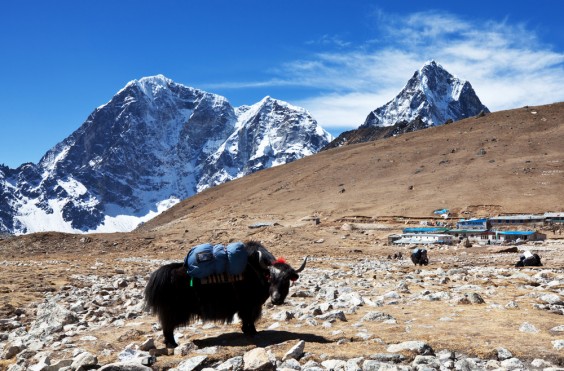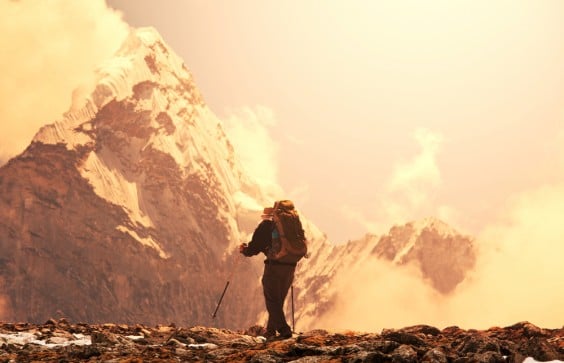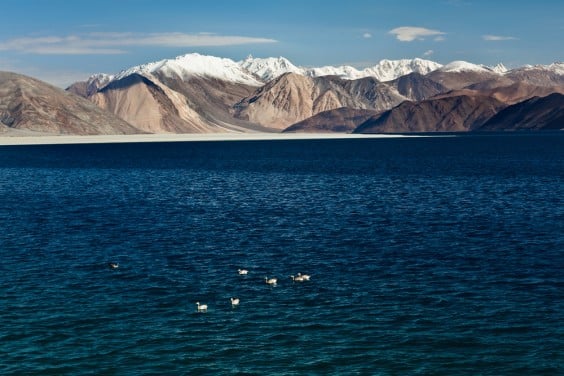The Himalayan mountain chain is of worldwide ecological significance, not just because it’s the highest ecosystem in the word but also because of its indigenous fauna and flora. The mountains are additionally the main source of Asia’s finest rivers, not to mention that the Tibetan plateau influences and affects the Indian monsoon. As far as tourism is concerned, especially trekking and hiking, it is important for travelers to be careful and responsible. Although some of the local communities have gone through an intensive process of urbanization, other spots are still unspoiled and they must be protected and cared for in order to remain in excellent condition.

Sustainable tourism in the Himalayas
There’s a boosting awareness of the effects mass tourism has on today’s environment. Ergo, the mere concept of sustainable tourism is starting to become increasingly more known. It’s important for tourism to respect, value, and promote a certain area’s value and it must be sensitive to the demands of the population living in that area. If you’re a trekking adventurer looking to explore the wild territories of the Himalayas, you should value the mountains and its staggering natural habitat. In spite of a code of conduct that must be employed, there’s still no guarantee that the people will protect the environment.

Trekking in particular is a great social and environmental impact on the whole Himalayan chain. Whether we like it or not, most local communities positioned near main travel routes have been greatly affected by mass tourism. Ironically, it’s us – the travelers – that often damage the things we actually came to admire. From a dying wish to explore the beaten track we end up creating another beaten track that more and more people will want to see. What are we doing? We’re basically destroying nature by making room for others to come behind us and contribute some more to that destruction.
Not many people value the wonders of the Himalayas
Travelers’ biggest mistake is that they want to experience traditional cultures without having to give up their foreign comfort. And the truth is we’re often disappointed if a community or region chooses to adopt modern housing and transportation. Tourism is bound by so many contradictions. Trekking the Himalayas is now a lot more accessible than it used to be. The Tibetan plateau with its imposing Everest peak is no longer a Nemesis but a goal professional mountaineer can attain if they’re dedicated enough.

A rich bequest in cultural and natural heritage makes the region an incredible destination for mountain tourism. Nonetheless, Nepal’s environment and overall surroundings are incredibly fragile. Furthermore, the traditions are in jeopardy because of the cultural globalization with the Western world which is modern and extremely industrialized.
Responsible tourism – programs in the making
Sustainable tourism is doing its best to look for sensible alternatives to maintain the Himalayan mountain chain intact. The ACAP (Annapurna Conservation Area Project) is currently optimizing the impact of tourism on the natural habitat, and they’re looking for better ways to preserve the environment while also welcoming foreigners on its territories.
The area embraces various land principles meant to combine sustainable community development with environmental protection. Annapurna’s biological diversity is rivaled by its wealthy cultural diversity. Ever since 1957 when the first trekker crossed paths with the locals, ACAP decided to make it Nepal’s most well-known travel destination, drawing more that 60% of the country’s total number of mountaineers and trekkers. ACAP adheres to three main philosophies: sustainability, people’s participation in protecting the environment, and conservation. Their efforts to promote sustainable tourism while also trying to protect the Himalayan environment are immeasurable, which is why travelers should be responsible too.

The first successful attempt to climb Mount Everest was almost 60 years ago. Right now, the Himalayas are a lot more accessible to explore, and travelers are not afraid to climb the chain’s highest and most dangerous peaks anymore. Some of the best trekking paths are across Tibet, Nepal, India, and Pakistan, yet if you’re feeling truly adventurous you can also try Burma. Regardless of your trekking itinerary, it’s of the utmost importance to think about the environment, do whatever you can to keep it safe by recycling. Throwing one plastic bottle off a cliff might not seem much to you, but imagine what would happen if 100 travelers threw 100 bottles off a cliff all at once.
About the Author:
This guest post was written by Edward Francis, travel enthusiast and blogger.
If you enjoyed this post, you might also like:




Get going on the Himalayas and experience the charming beauty of sky touching mountains. Nothing can beat Himalaya mountains in this whole world. See the magnificent view of Himalaya with the exciting offers ~ Visit : http://himalayadestination.com/